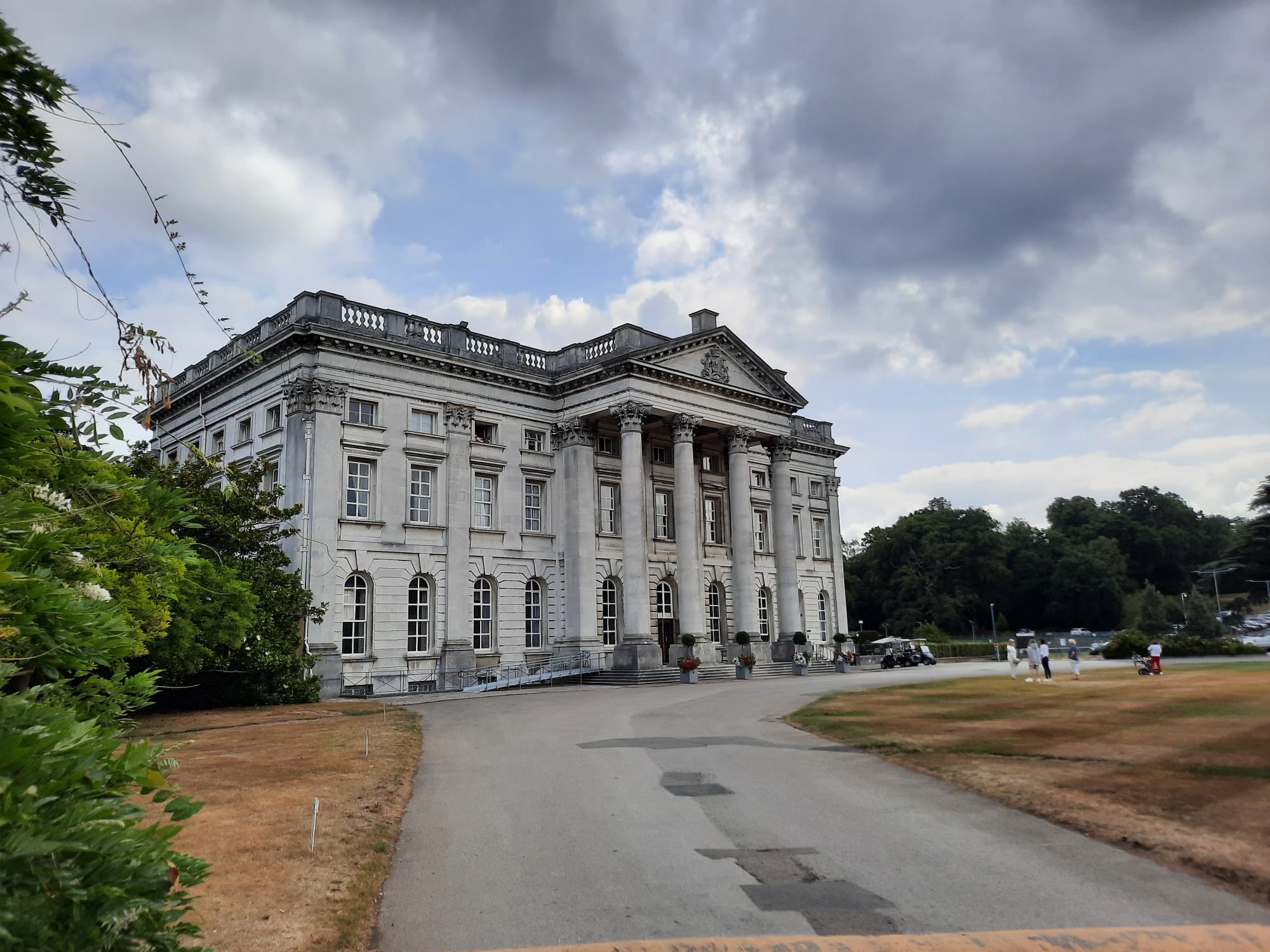Moor Park, Rickmansworth
A guided tour of Moor Park during the 2022 visitor season. This is very likely the only time a golf club will feature on the Salterton Arts Review so let’s get stuck in, shall we?
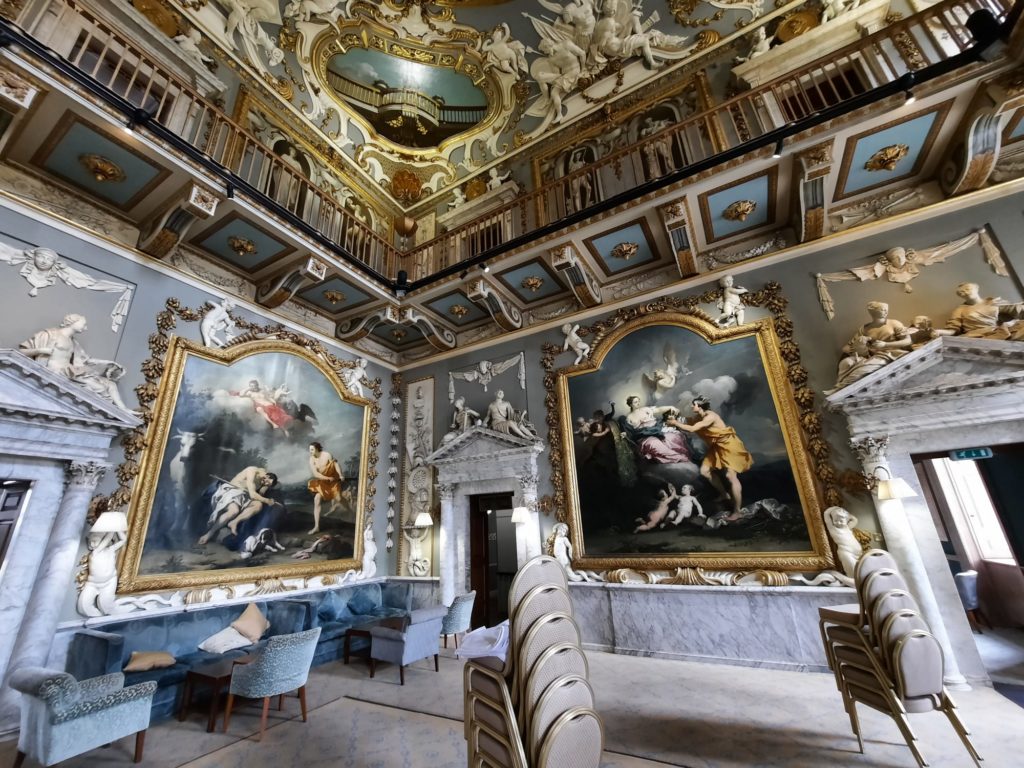
Moor Park
There is rather an interesting history to Moor Park, a stately home turned golf club near Rickmansworth, North West of London. The first thing to understand is that the ‘moor’ in Moor Park refers to an actual moor. Inhabited since the 12th Century, this site on the flood plain of the Colne River belonged to the Abbey of St Albans. It passed to Cardinal Wolsey in 1515 and then Henry VIII in 1531, by now a palace known as the Manor of the More. Henry banished Catherine of Aragon here after their marriage was annulled (so I guess as an aside that this means it was the implied location when I saw Bea Segura’s impassioned speech as Catherine in Henry VIII at the Globe).
The thing about building a palace on a flood plain is that it can be a bit cold, damp, and dismal. By the end of the 16th Century The More was a ruin. The Duke of Bedford was also now leasing the estate, Henry having decided he had too many properties and needed stewards for some. The Third Duke built a new house on the hill in the palace’s deer park. Hence moor + park = Moor Park.
Moor Park is one of those stately homes which passed through many hands rather than remaining in one family. The First Duke of Monmouth had it rebuilt in 1678-9. His wife Anne, Duchess of Buccleuch inherited it when he was beheaded, and sold it to Benjamin Haskins-Stiles. He was one of the fortunate ones to have made rather than lost a fortune in the South Sea Bubble. He refaced and extended Moor Park and commissioned interior paintings and decoration. In the 1750s Admiral Lord Anson brought in Capability Brown to design a garden which became famous. Thomas Bates Rous in the 1780s demolished the porticos to sell the Portland stone. I want to get us up to the 20th Century in time for the next section, so suffice it to say it continued to change hands for the next century or so.




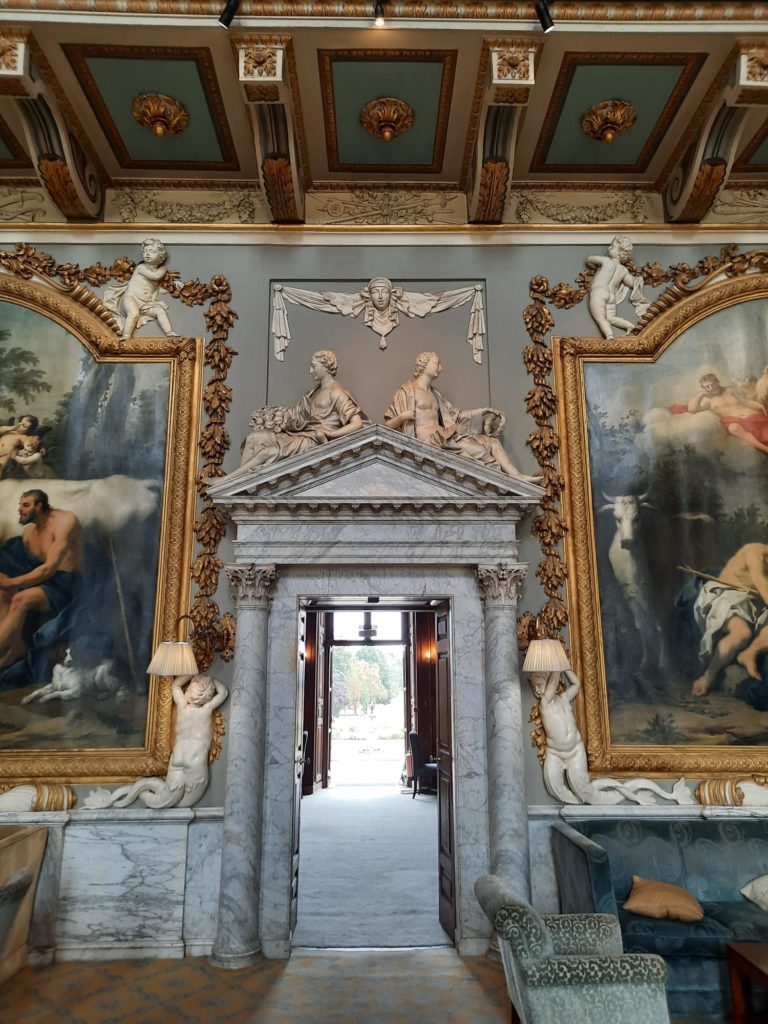
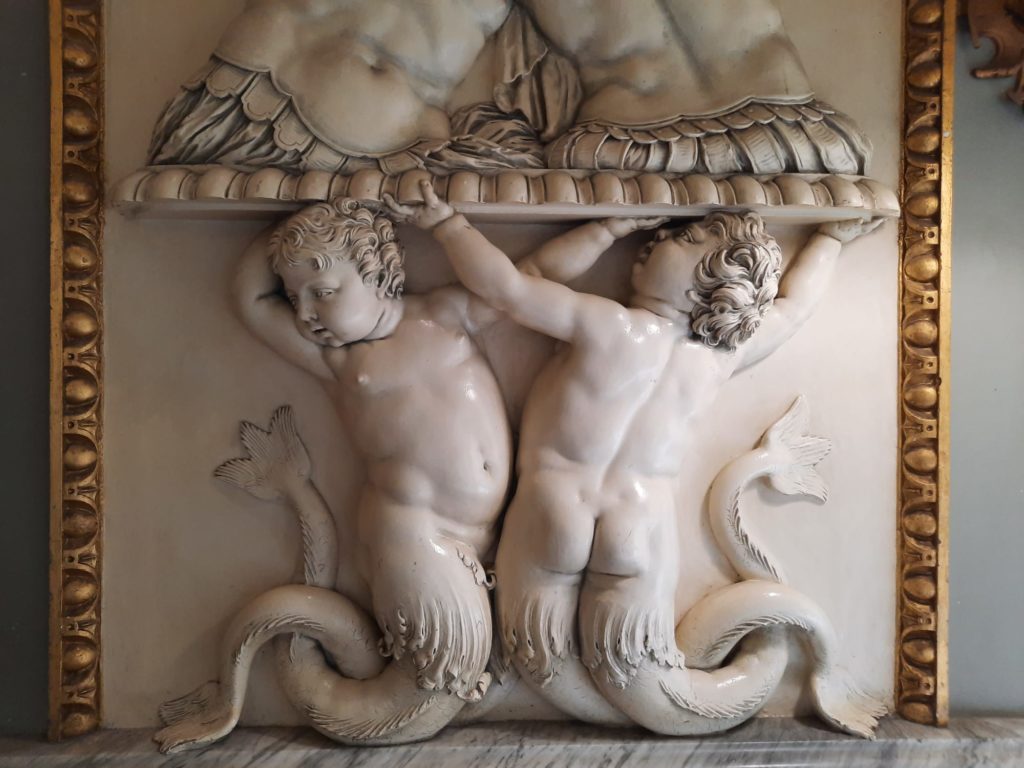
Moor Park Becomes A Golf Club
We now jump ahead to 1919, when Lord Leverhulme purchased the Moor Park estate. He instructed Harry Colt to design not one, not two, but three golf courses on the site. This improved on a private golf course built by Robert Grosvenor, Lord Ebury, in 1845. Leverhulme’s plan, on the other hand, was a golf club, which opened in 1923. In 1937 Rickmansworth Urban District Council purchased the house and 350 acres of land to prevent further development, and leased it back to the golf club. They also made one course a municipal one.
An interesting period for Moor Park occurred during WWII. The army requisitioned the site in 1939. It became the headquarters for the First Airborne Corps. From here they planned Operation Market Garden, an unsuccessful attempt to capture bridges on the Rhine. Today’s ‘Arnhem Room’ commemorates this connection. After the war the Moor Park Golf Club resumed activities, purchasing the freehold for the site in 1994. Today’s club has additional sporting facilities as well as the golf courses, on site catering, and a spa.
Despite this tumultuous history, Moor Park is not in bad shape today. The impressive internal decorative schemes have been restored. A lot of the more functional facilities of the golf club are in the basement and thus do not intrude on the experience of the house. When you compare it to somewhere like Sutton House which has changed beyond all recognition over the centuries, it’s remarkably intact. And, luckily for this post, the Arts Society Moor Park give infrequent but regular tours of Moor Park, giving non golf club members the chance to see inside.

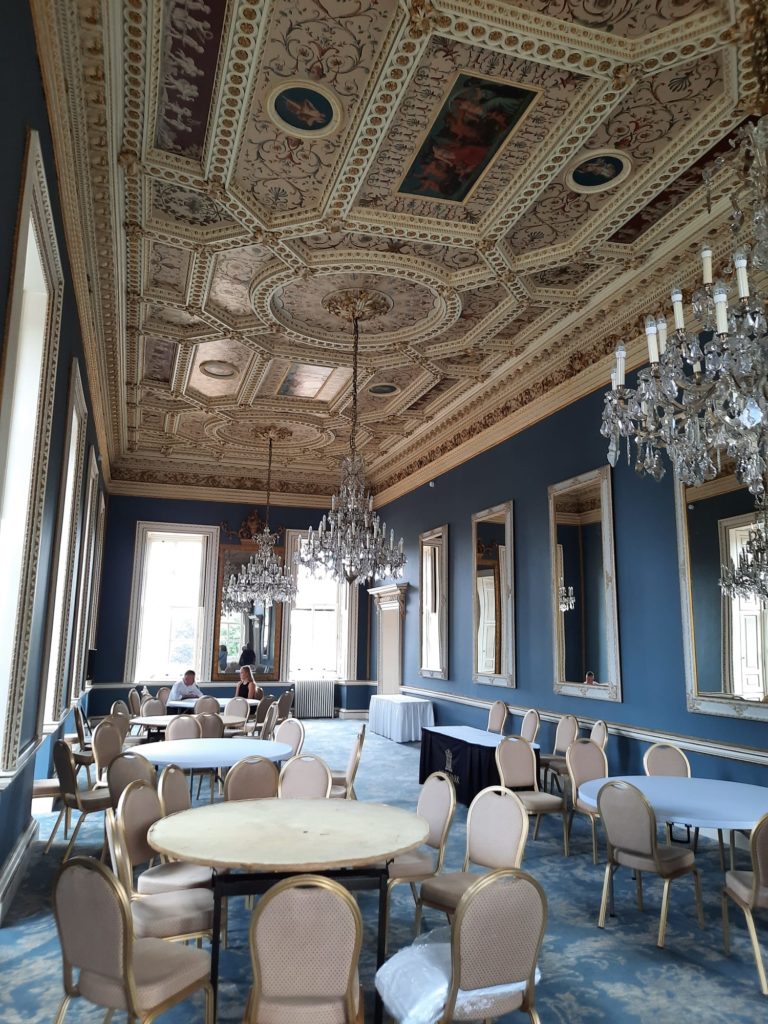
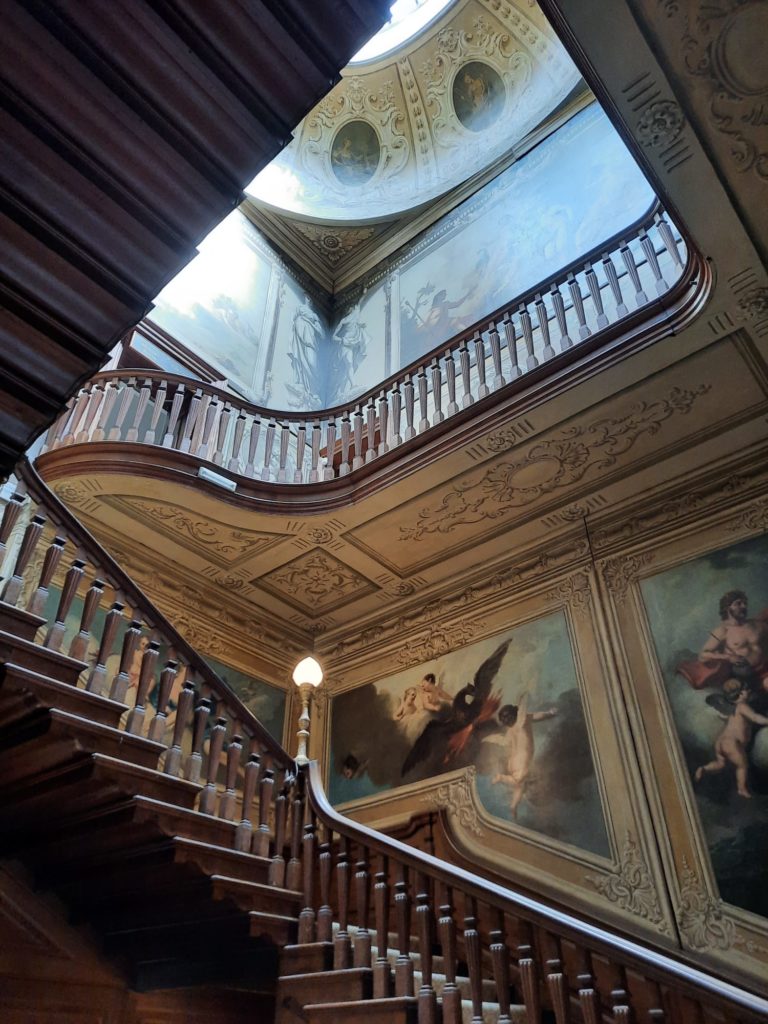

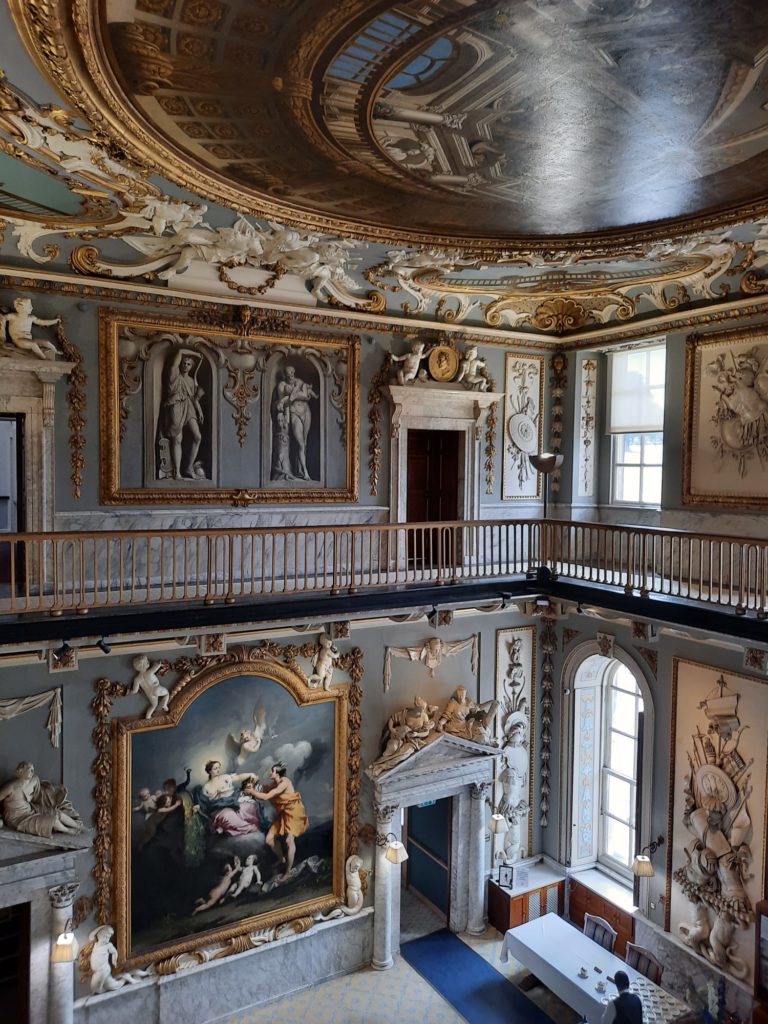
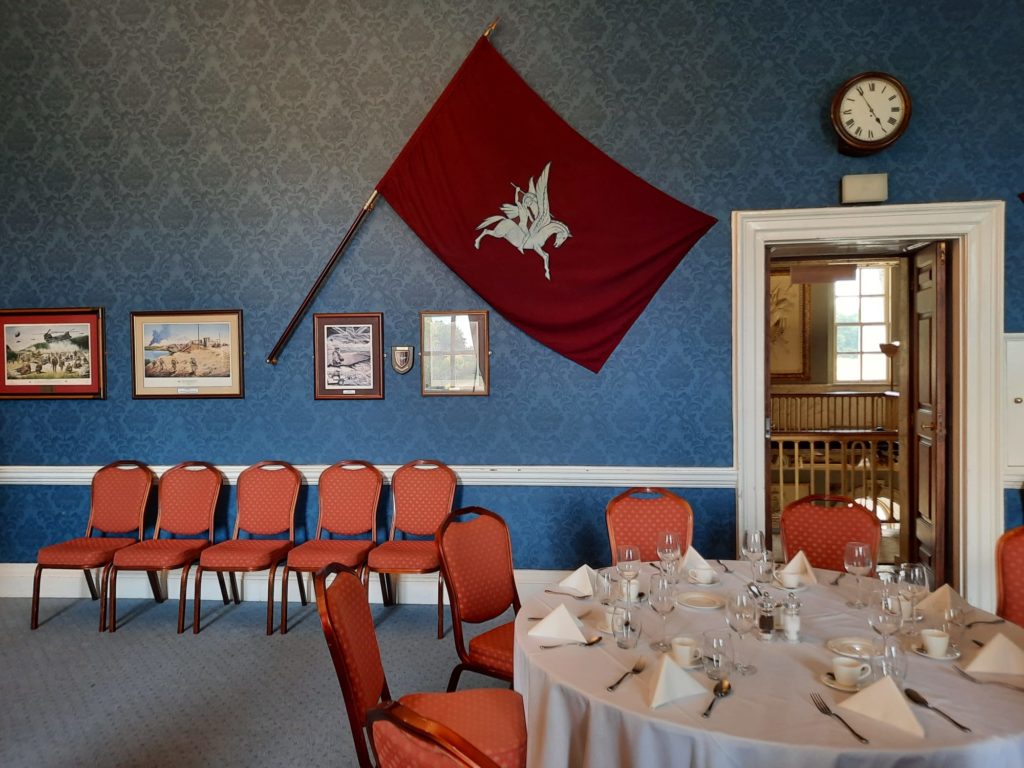
Stately Home/Working Golf Club
I joined the last tour for 2022, all the way back in August. The trip from South East London was a long one, compounded by rail strikes. And following directions on my phone I walked along a road that led me through part of the golf course, never quite sure that I was in the right place.
When I arrived at the house, I had a warm welcome from the Golf Club staff and members of the local Arts Society. They had a slide show going while we waited, as well as tea and biscuits. Would that all cultural activities came with refreshments! Our tour, with a volunteer guide, lasted just under an hour. We saw the trompe l’oeil ceiling painted by Sir James Thornhill, also the architect of this version of the house. Staircase paintings by Francesco Sleter, who took over from Thornhill after a falling out. A fabulous series on Ovid’s Metamorphoses by Jacopo Amigoni. Very fine carvings in wood, and plasterwork. And the Arnhem Room set up to tell the story of the house during WWII.
I’ve seen stately homes that have remained in the family, and some that are under the care of English Heritage or the National Trust. But I don’t think I’ve been to one before that is being run as an entirely different kind of business. And is only incidentally a stately home. It was a little peculiar in that respect, but also interesting to see how private interests can maintain heritage. I don’t know that I would recommend going as far out of your way as I did to see it. But for those who are a little closer to Rickmansworth, it’s worth a look. Particularly if you come from Moor Park station and get a sense of the private Moor Park Estate, built on land which once also belonged to the house.
Salterton Arts Review’s rating: 3/5
Next tours available in 2023, check website for details
If you see this after your page is loaded completely, leafletJS files are missing.

